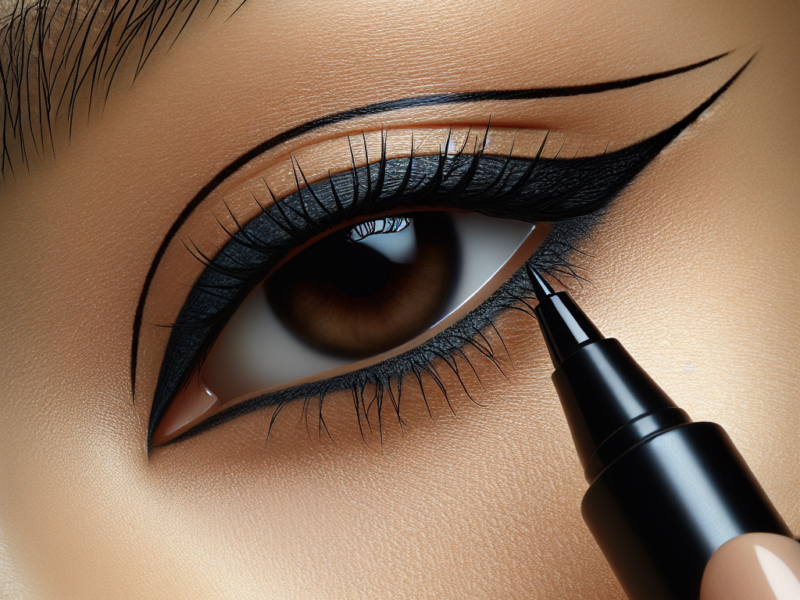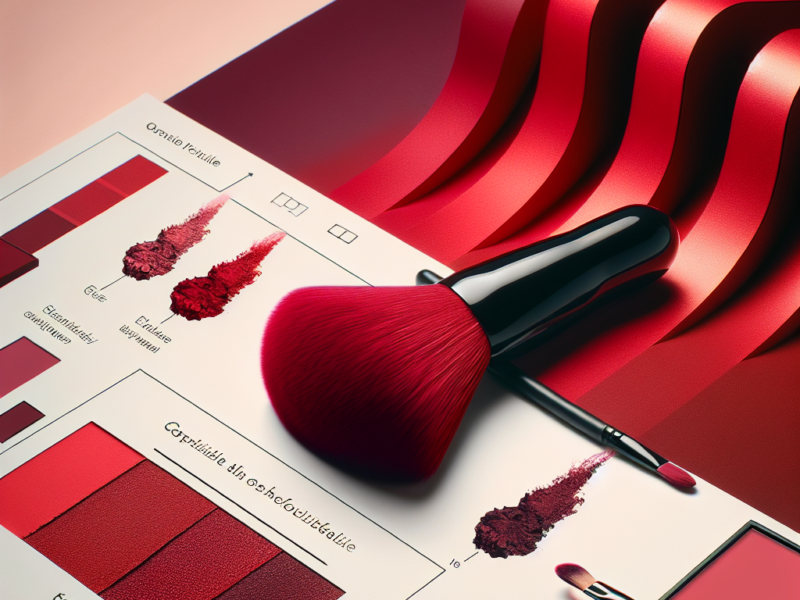If you’ve ever wondered how to achieve flawless, sculpted cheekbones or a radiant, lit-from-within glow, look no further. This article will teach you the secrets of professional contouring and highlighting, helping you enhance your facial features like a pro. Whether you’re a makeup enthusiast or a beginner, these easy-to-follow techniques and expert tips will have you mastering the art of contouring and highlighting in no time. Get ready to step up your makeup game and achieve a photo-ready, celebrity-worthy complexion.
Check here to see how this cup of morning coffee will bright your whole day!!
Understanding Contouring and Highlighting
Contouring and highlighting are makeup techniques that can completely transform your face shape and enhance your features. Contouring refers to the process of using darker shades to create shadows and define certain areas of the face, while highlighting involves using lighter shades to bring forward and illuminate specific areas. These techniques work together to create a sculpted and radiant look, adding depth and dimension to your face.
What is contouring?
Contouring involves using a product, usually a powder or cream, that is a few shades darker than your natural skin tone, to create shadows and define certain areas of the face. This helps to create the illusion of a slimmer nose, more chiseled cheekbones, and a more defined jawline. By strategically applying the contour product, you can sculpt and shape your face to create a desired look.
What is highlighting?
Highlighting is the opposite of contouring. It involves using a product, typically a lighter shade than your natural skin tone, to bring forward and accentuate certain areas of the face. This technique helps to create a radiant and glowing complexion by drawing attention to the high points of your face, such as the cheekbones, brow bone, and the bridge of the nose.
Why should you contour and highlight?
Contouring and highlighting can be incredibly beneficial for various reasons. Firstly, it allows you to enhance your natural features and create a more symmetrical and balanced appearance. It can also help to define your facial structure and make certain features, such as your cheekbones, appear more prominent. Additionally, contouring and highlighting can be used to create a more youthful and radiant complexion, as it adds dimension and glow to your face.
Different types of contouring products
There are various types of contouring products available, including powders, creams, and sticks. Powders are the most commonly used and are great for beginners as they are easy to blend and provide a natural finish. Creams, on the other hand, are more suitable for those with dry or mature skin as they blend seamlessly and provide a dewy look. Sticks are convenient for on-the-go touch-ups and are often easy to apply directly onto the skin.
Different types of highlighting products
Similar to contouring, highlighting products come in various forms such as powders, creams, and liquids. Powder highlighters are versatile and easy to use, providing a subtle glow to the skin. Cream and liquid highlighters offer a more intense and dewy finish, perfect for those who want a brighter and more radiant look. It’s important to choose a highlighter that complements your skin tone and blends seamlessly with your contour shade.
Prepping the Skin
Before diving into the contouring and highlighting process, it’s vital to ensure that your skin is prepped and ready for makeup application. Here are some key steps to follow:
Cleanse your face
Begin by gently cleansing your face to remove any dirt, oil, or makeup residue. This will create a clean canvas for your contour and highlight products to adhere to, ensuring a smooth and seamless application.
Moisturize
Next, moisturize your skin to provide hydration and create an even base for your makeup. Applying a lightweight moisturizer will help your makeup to glide on effortlessly and prevent it from appearing dry or cakey.
Apply primer
To ensure that your contour and highlight products stay in place throughout the day, it’s essential to apply a primer. Primer helps to smooth out the skin’s texture, minimize the appearance of pores, and create a long-lasting base for your makeup.

Choosing the Right Products
When it comes to contouring and highlighting, selecting the right products is crucial. Here are some key factors to consider:
Determining your skin tone
Before choosing your contour and highlight shades, it’s important to determine your skin tone. This will help you select shades that complement your complexion and achieve a more natural and seamless finish.
Selecting the right contour shade
When selecting a contour shade, opt for a color that is a few shades darker than your natural skin tone. This will create a shadow effect and help to sculpt and define your features. Avoid shades that are too cool-toned or warm-toned, as they may not look natural on your skin.
Selecting the right highlight shade
For highlighting, choose a shade that is a few shades lighter than your natural skin tone. This will help to bring forward the areas you want to illuminate and create a radiant glow. It’s important to select a shade that complements your skin tone, whether it be a warm-toned, cool-toned, or neutral highlighter.
Choosing the right tools
Having the right tools for contouring and highlighting can make a world of difference. For contouring, opt for a fluffy brush or a contouring brush with a slanted edge, depending on your preference. These brushes allow for precise application and blending. For highlighting, a fan brush or a tapered brush works best to apply and blend the product seamlessly onto the high points of your face.
Contouring Techniques
To achieve a flawless contour, it’s essential to understand your face shape and follow the appropriate techniques. Here’s a breakdown of the contouring process:
Identify your face shape
Before starting your contouring journey, determine your face shape. This will help you understand which areas of your face to contour and highlight to create the most flattering look. Common face shapes include round, square, oval, heart, and diamond.
Basic contouring steps
Start by applying the contour product to the areas you want to create shadows, such as the hollows of your cheeks, temples, and along the jawline. Use a light hand and gradually build up the intensity, blending the product into the skin using circular motions. Be sure to blend thoroughly to avoid any harsh lines.
Contouring for different face shapes
For a round face, focus on creating shadows along the sides of the face to create the illusion of a slimmer face shape. Those with a square face can contour along the jawline and temples to soften the angles. Oval faces can contour along the temples and under the cheekbones to enhance their natural bone structure. Heart-shaped faces can contour along the hairline and temples to balance the forehead and create a more defined jawline. Diamond-shaped faces can contour along the temples and under the cheekbones to add more dimension to their features.
Blending techniques
Blending is key to a natural-looking contour. Use a clean brush or a damp beauty sponge to blend the contour product into the skin. Circular motions or a tapping motion can help blend out any harsh lines and create a seamless finish. Remember to blend upwards and outwards towards the hairline to ensure a natural and well-blended contour.

Highlighting Techniques
Highlighting is all about accentuating your best features and adding a beautiful glow to your complexion. Here’s how to achieve a flawless highlight:
Areas to highlight
The most common areas to highlight include the cheekbones, brow bone, bridge of the nose, cupid’s bow (the area above your upper lip), and the inner corners of the eyes. Applying highlighter to these areas will instantly brighten and lift your face.
Highlighting cream vs. powder
When it comes to choosing between cream and powder highlighters, it ultimately depends on your preference and skin type. Cream highlighters offer a dewy and natural finish, perfect for those with dry or mature skin. Powder highlighters provide a more intense and shimmery effect, ideal for those with oily or combination skin. Experiment with both textures to find which one works best for you.
Applying highlighter on different features
To highlight the cheekbones, apply the product on top of the highest point of the bone and blend upwards towards the temples. For the brow bone, apply the highlighter just beneath the arch of the brow and blend outwards. On the bridge of the nose, apply a thin strip of highlighter down the center and blend it outwards towards the sides. For the cupid’s bow, apply the highlighter to the center of the upper lip and blend it slightly. Lastly, apply a small amount of highlighter to the inner corners of your eyes to make them appear brighter and more awake.
Blending and Finishing
Once you have applied both your contour and highlight products, it’s important to blend and finish the look for seamless results.
Blending the contour and highlight
To ensure that your contour and highlight blend seamlessly together, use circular motions or tapping motions with a clean brush or damp beauty sponge. This will help to blend out any harsh lines and create a soft and natural transition between the two shades.
Setting the makeup
To set your contour and highlight in place and prolong its wear, apply a translucent powder all over your face. This will help to prevent any smudging, fading, or creasing throughout the day. Be sure to use a light hand and a fluffy brush for a natural finish.
Finishing touches
To complete your contour and highlight look, apply blush to the apples of your cheeks for a healthy flush of color. Finish off with your favorite lip color and a touch of mascara to bring attention to your eyes. Remember, the goal is to enhance your natural beauty, so keep it light and fresh.

Contouring and Highlighting Tips and Tricks
To take your contouring and highlighting skills to the next level, here are some helpful tips and tricks:
Use a light hand for natural results
When applying contour and highlight products, it’s important to use a light hand and gradually build up the intensity. This will help to achieve a more natural and well-blended look. Remember, it’s easier to add more product than it is to remove excess.
Gradual build-up for intensity
If you desire a more intense contour or highlight, it’s best to apply thin layers of product and gradually build up the intensity. This will give you more control over the final result and prevent the makeup from appearing too harsh or heavy.
Avoid common contouring mistakes
To avoid common contouring mistakes, it’s important to blend thoroughly and choose shades that complement your skin tone. Harsh lines, muddy-looking contours, and unblended products can make your makeup appear unnatural. Take your time during the application process and step back to check your work in natural lighting.
Experiment with different techniques
Don’t be afraid to experiment with different contouring and highlighting techniques to find what works best for you. Everyone’s face shape is unique, so it’s important to tailor your techniques to suit your individual features. Play around with different angles and placements to achieve your desired look.
Practice and experiment
Contouring and highlighting, like any other skill, require practice and experimentation. Don’t be discouraged if your first attempts don’t turn out perfectly. Practice on different occasions and take note of what techniques and products work best for you. With time and practice, you’ll become a pro at contouring and highlighting.
Maintenance and Touch-ups
To keep your contour and highlight looking fresh throughout the day, here are some maintenance and touch-up tips:
Maintaining the contour and highlight throughout the day
To maintain your contour and highlight, try to avoid touching your face throughout the day. Oily skin can cause the makeup to fade or smudge, so it’s best to blot any excess oil with a clean tissue or oil-blotting sheets. Avoid excessive rubbing or wiping, as this can disturb the makeup.
Quick touch-ups for a fresh look
If you find that your contour and highlight has faded or needs a little touch-up, carry a compact mirror, your contour shade, and highlighter with you. Use a small brush or your fingertips to apply a touch of product to the areas that need it, blend it out, and you’ll instantly have a fresh and polished look.
Contouring and Highlighting for Different Occasions
Contouring and highlighting can be adapted to suit various occasions and settings. Here are some tips specifically tailored to different scenarios:
Daytime contouring and highlighting
For daytime, it’s best to keep your contour and highlight subtle and natural. Opt for a light and matte contour shade that mimics the natural shadows of your face. Choose a highlight shade that provides a soft glow without being too shimmery or intense. Remember, less is often more for a daytime look.
Nighttime contouring and highlighting
For nighttime, you can take your contour and highlight to the next level. Intensify the contour by applying a slightly darker shade or building up the product for a more defined look. Illuminate your features with a more shimmery or bold highlight shade to enhance your natural glow under artificial lighting.
Special event contouring and highlighting
Special events, such as weddings or parties, call for a flawless and long-lasting contour and highlight. Use a full-coverage foundation and set it with a heavier hand to ensure your makeup stays in place throughout the entire event. Consider using cream contour and highlight products for a more dramatic and photogenic effect. Don’t forget to take into consideration any professional photos that will be taken and adjust your makeup accordingly.
Celebrity-Inspired Contouring and Highlighting
Celebrities are often at the forefront of beauty and makeup trends. If you’re looking to recreate the looks of your favorite celebrities, take inspiration from their red carpet appearances or makeup tutorials. Many celebrity makeup artists also share their techniques and product recommendations, providing a wealth of resources to help you achieve your desired look.
Get the looks of your favorite celebrities
To get the looks of your favorite celebrities, study their makeup looks and try to identify the key elements that make their contour and highlight stand out. Pay attention to their face shape, the placement of their contour and highlight, and the overall effect they’re trying to achieve. This will help guide you in recreating their looks on your own face.
Learn from celebrity makeup artists
Celebrity makeup artists are the experts behind many iconic contour and highlight looks. Many of them share their techniques and product recommendations on social media platforms or through makeup tutorials. Take advantage of these resources and learn from the professionals themselves. They can offer valuable insights and tips to help you perfect your contouring and highlighting skills.
By understanding contouring and highlighting techniques, prepping the skin properly, selecting the right products, and mastering blending and finishing techniques, you can confidently contour and highlight like a pro. Remember to practice, experiment, and adapt your techniques to suit your individual features and preferences. With time and dedication, you’ll be able to achieve a flawless and radiant look that enhances your natural beauty.




